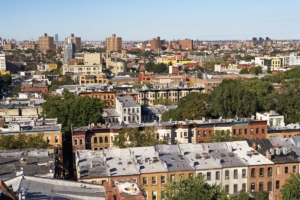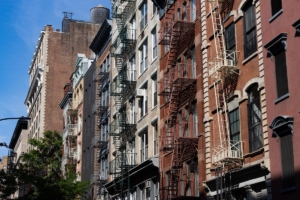While New York City rents have increased significantly over the past several years, believe or not, there is a growing share of apartments that actually receive rent discounts and concessions.
Between March 2011 and March 2016, the StreetEasy Rent Indices, which tracks rent prices across the city, increased 20.7 percent in Manhattan, 23.9 percent in Brooklyn and an incredible 63.4 percent in Queens. However, the era of ever-higher rents may be slowing down, as more rental apartments are being discounted [i]. Over the past five years, the share of all rental apartments in Manhattan that offered a discount increased by 5.3 percent. In Brooklyn, the share of rental apartments with a discount increased by 10.5 percent during the same period and in Queens it increased by 10.9 percent.
The typical discount in each borough averaged between 6 and 7 percent over the past year and it has not budged much. In Manhattan, the mean discount increased slightly between 2015 and 2016, from 6.5 percent to 6.6 percent. In Brooklyn, the mean discount was down from last year by 0.5 percent, and in Queens it was basically unchanged from last year at 6.3 percent.
[tableau server=”public.tableau.com” workbook=”rentConcessions” view=”StreetEasyRentConcessions” tabs=”no” toolbar=”no” revert=”” refresh=”yes” linktarget=”” width=”600px” height=”770px”][/tableau]
Landlords Offering Rent Concessions
In an effort to fill vacant rental units faster, among the strategies landlords use is to offer a concession to a prospective tenant. This most commonly comes in the form of one or two months of free rent. This type of concession has grown in recent months and it is a sign that the rental market may be softening.
We have analyzed hundreds of thousands of listing descriptions for mentions of phrases such as “free month’s rent” and found that the share of all rental inventory in Manhattan that offered a concession of some kind increased from 2 percent to 6.1 percent between March 2015 and March 2016. In Brooklyn, the share of apartments with a concession increased the most, rising from 3.8 percent to 9.0 percent. In Queens, the share increased from 0.8 percent to 3.2 percent [ii].
The length of the concession has also increased over the past year. In March 2016, the average concession offered in Manhattan was 44 days and has increased by seven days over the past year. In Brooklyn, the average concession offered is 42 days, which is an increase of one day from last year. In Queens, the average concession is 36 days, an increase of six days from last year.
Concessions are not necessarily a better deal than a discount, though. While a concession will lower the rent for the first year or two of the lease, it allows the rent to reset to the higher, concession-free amount at the end of the term. Landlords also maintain the higher advertised dollar rent, so subsequent renters can be offered the same monthly rent, but without the concession.
Fee vs. No-fee Listings
Rental inventory in New York City falls within two categories: fee and no-fee listings. The latter indicates the tenant will not have to pay a broker’s fee, which can reach up to 15 percent of the unit’s annual rent. As rent prices continue to climb, no-fee listings have become more popular, making up over 40 percent of the listings in March 2016 on StreetEasy in Manhattan and Brooklyn and 28 percent in Queens. Over the past five years, the share of no-fee apartments has increased by 10 percent in Manhattan, 23 percent in Brooklyn, but declined by 6 percent in Queens.
No-fee apartments do not necessarily add the broker fee back into the rent by spreading the fee out over 12 months. If the standard broker fee is equivalent to one month’s rent on a 12-month lease and assuming that demand for rental apartments is strong, the asking rent would be 8.3 percent higher (one-twelfth is about 8.3 percent) when compared to an equivalent apartment.
This is not always true though. In Manhattan, when looking at the change in asking rent for properties that switch from no-fee to fee in one year, no-fee asking rent (the premium) is higher than fee rentals by an average of just two percent. In Brooklyn, for rentals that switch between no-fee and fee, the asking rent is on average 1.8 percent greater in the no-fee listing and in Queens, it’s 1.2 percent greater. Since 2014, these differences in Manhattan and Brooklyn have fallen by 0.4 percent and 1.0 percent, respectively, which suggests weak demand growth. In Queens, its no-fee mean asking rent premium has increased by 2.2 percent since 2014, suggesting demand for rentals in the borough continues to grow.
Despite the greater amount of “breaks” that renters can get on a new apartment, it does not mean they should move any slower. Once a rental apartment gets a discount, it is typically on the market for just 18 days in Manhattan, 15 days in Brooklyn and 17 days in Queens before being rented. By comparison, apartments with a concession are typically on the market for an extra 29 days in Manhattan, 44 days in Brooklyn and 40 days in Queens.
Perhaps not surprisingly, since 2007, no-fee apartments are the quickest to be rented. In Manhattan, no-fee listings typically spent eight fewer days on the market than all rental listings. In Brooklyn, they typically spent three days less on the market and in Queens they typically spent two fewer days.
[i] StreetEasy defines a discount on a rental listing as one where the last asking rent is less than its initial asking rent.
[ii] StreetEasy defines a concession as period during a rental lease of at least 12-months where no rent is due.









